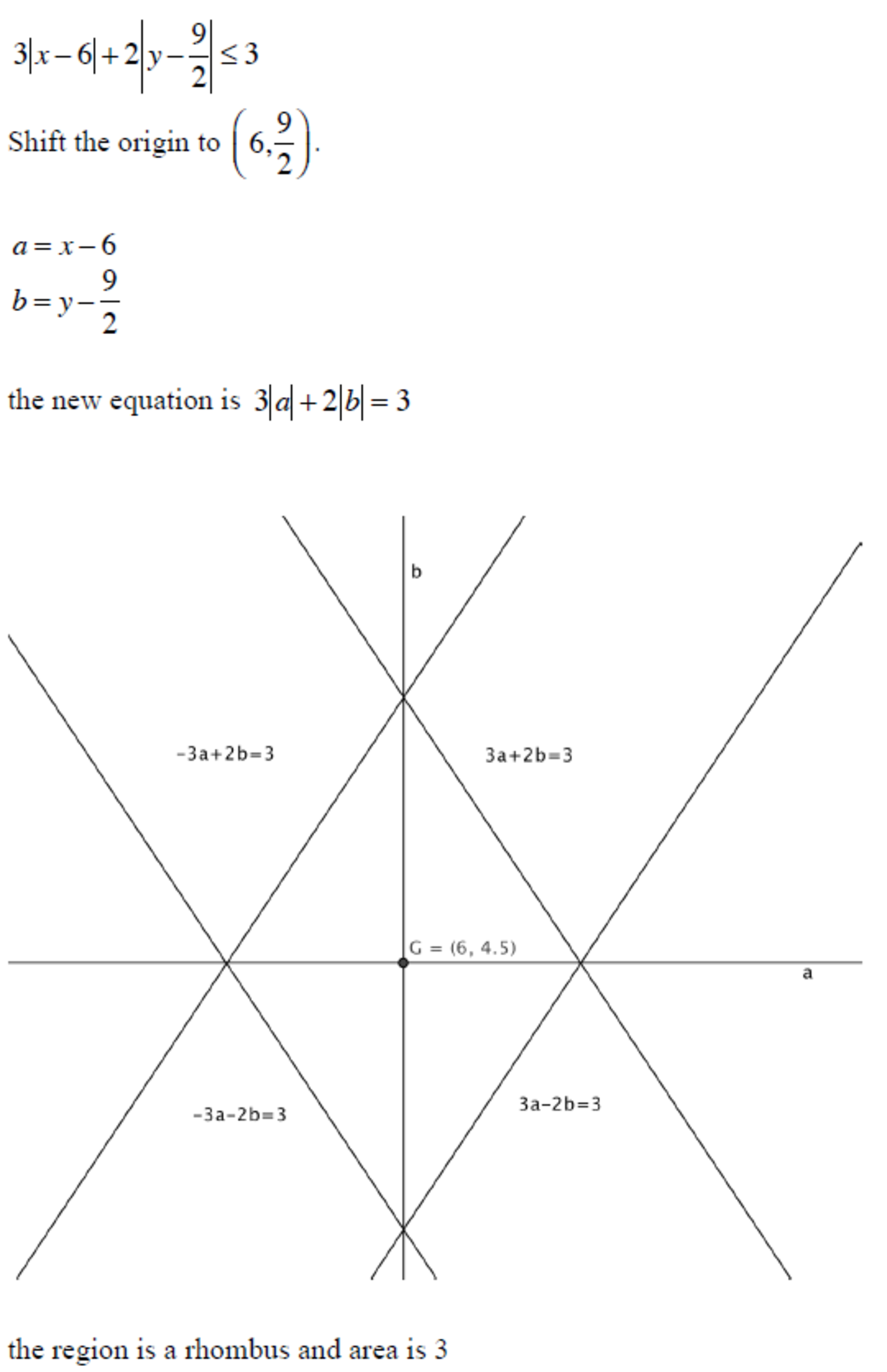Area defined by Inequality
Compute the area of the region defined by the inequality ∣ 3 x − 1 8 ∣ + ∣ 9 − 2 y ∣ ≤ 3 .
Report the answer up to 2 decimal places.
The answer is 3.00.
This section requires Javascript.
You are seeing this because something didn't load right. We suggest you, (a) try
refreshing the page, (b) enabling javascript if it is disabled on your browser and,
finally, (c)
loading the
non-javascript version of this page
. We're sorry about the hassle.
2 solutions
I found it helpful to draw a sketch graph as I worked out the solution.
Let's start by finding the equations of the lines along which equality holds, in other words where -
∣ 3 x − 1 8 ∣ + ∣ 9 − 2 y ∣ = 3
This allows us to write down four equations for the four lines bounding the region we are looking for ( 3 x − 1 8 ) + ( 9 − 2 y ) = 3
( 3 x − 1 8 ) − ( 9 − 2 y ) = 3
− ( 3 x − 1 8 ) + ( 9 − 2 y ) = 3
− ( 3 x − 1 8 ) − ( 9 − 2 y ) = 3
Solving the first and second of these as simultaneous equations gives their intersection point ( 7 , 2 9 )
Solving the first and third gives their intersection point ( 6 , 3 )
Solving the second and fourth gives their intersection point ( 6 , 6 )
Solving the fourth and third gives their intersection point ( 5 , 2 9 )
Plotting these points reveals that the required region is a diamond shape. If you think of it as two identical triangles base to base it is easy to calculate its area as 2 × 2 1 × 2 × 2 3 = 3
Note: There is a more sophisticated way to find the vertices of the region, based on the observation that they occur when the argument of one of the modulus functions change sign.
